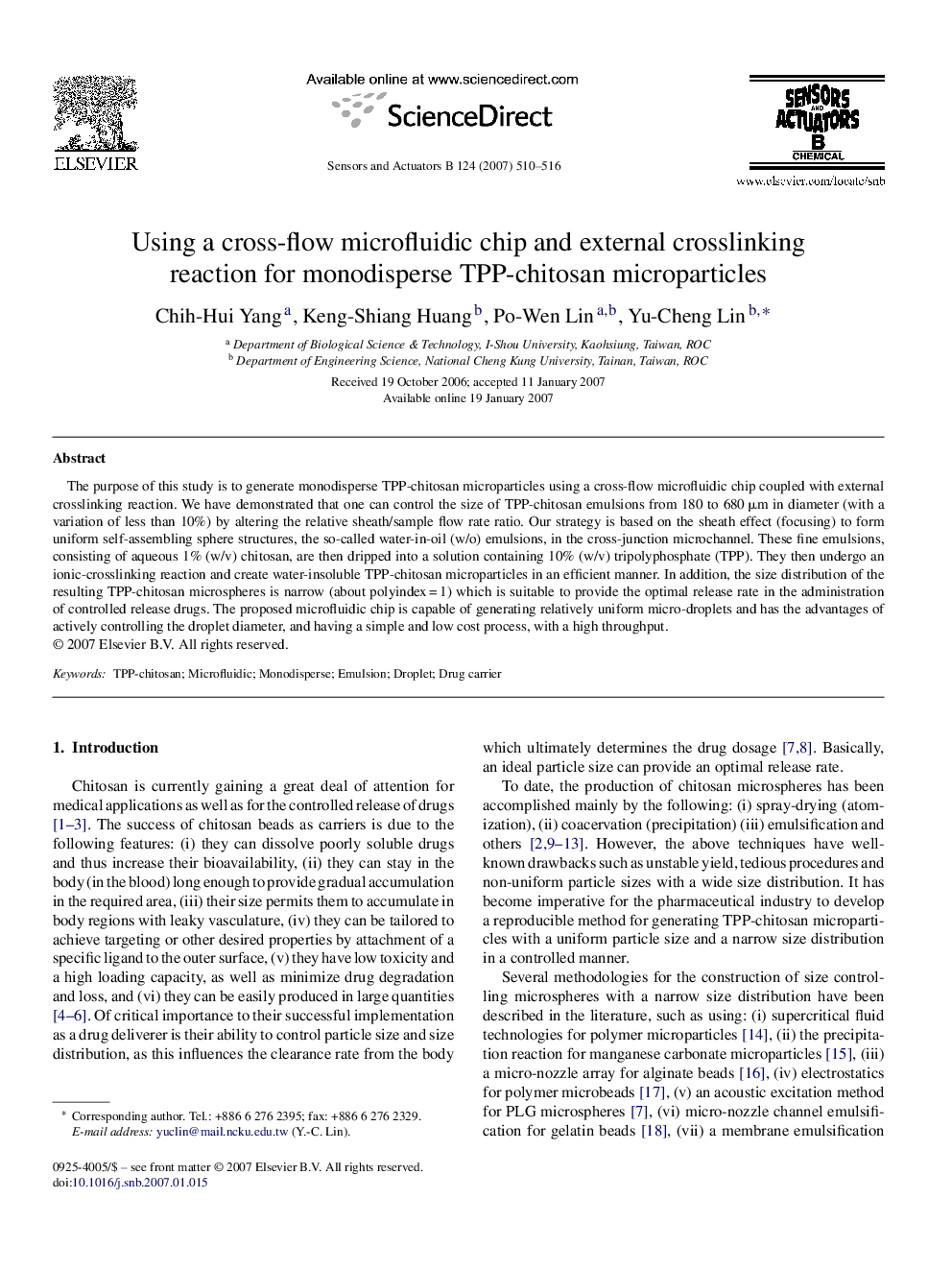| Article ID | Journal | Published Year | Pages | File Type |
|---|---|---|---|---|
| 741669 | Sensors and Actuators B: Chemical | 2007 | 7 Pages |
The purpose of this study is to generate monodisperse TPP-chitosan microparticles using a cross-flow microfluidic chip coupled with external crosslinking reaction. We have demonstrated that one can control the size of TPP-chitosan emulsions from 180 to 680 μm in diameter (with a variation of less than 10%) by altering the relative sheath/sample flow rate ratio. Our strategy is based on the sheath effect (focusing) to form uniform self-assembling sphere structures, the so-called water-in-oil (w/o) emulsions, in the cross-junction microchannel. These fine emulsions, consisting of aqueous 1% (w/v) chitosan, are then dripped into a solution containing 10% (w/v) tripolyphosphate (TPP). They then undergo an ionic-crosslinking reaction and create water-insoluble TPP-chitosan microparticles in an efficient manner. In addition, the size distribution of the resulting TPP-chitosan microspheres is narrow (about polyindex = 1) which is suitable to provide the optimal release rate in the administration of controlled release drugs. The proposed microfluidic chip is capable of generating relatively uniform micro-droplets and has the advantages of actively controlling the droplet diameter, and having a simple and low cost process, with a high throughput.
